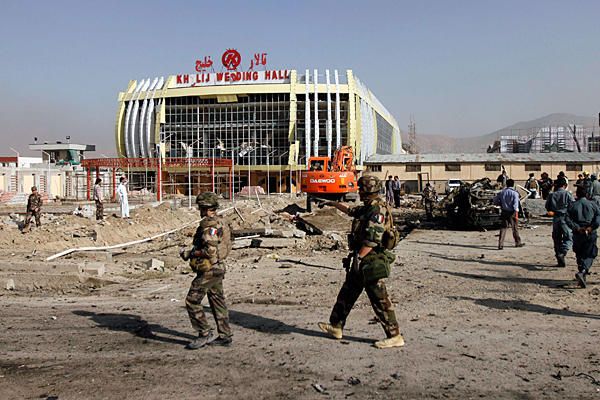Green-on-Blue Violence Rising in Afghanistan

Afghanistan is becoming an increasingly dangerous place for US and NATO forces due to green-on-blue violence. Green-on-blue violence includes attacks against coalition forces by Afghanistan police, the same police that coalition members are training.
These green-on-blue attacks have become more prevalent within the past two years, accounting for 16% of coalition casualties this year alone.
The centerpiece of coalition strategy today is training police forces to secure Afghanistan, as coalition forces withdraw from the region. Since President Obama announced his plan to withdraw surge forces, the frequency of these attacks has increased.
Naturally, a discussion centered on the motivations of green forces in these attacks has begun. The senior commander of coalition forces in Afghanistan, Gen. John Allen (USMC), has pointed to infiltration of Afghan security forces by Taliban operatives. He estimated that approximately 10 percent of green-on-blue attacks are made by Taliban members posing as Afghan security personnel.
The Long War Journal has compiled data on the location and frequency of green-on-blue attacks in Afghanistan. In 2012, 40 attacks have been carried out, up from 15 in all of 2011.
The most recent green-on-blue attacks occurred on Tuesday, when two members of NATO forces were killed by a man wearing an Afghan police uniform. The killer escaped and is presumed to be a Taliban member.
These attacks are contributing stress to already strained relationships between Kabul and western countries that have grown weary of the conflict in Afghanistan. For observers, a clear question arises surrounding the ability of Afghan forces to take over the security role that international troops have played for the past several years.
A complete transition will occur soon, with American troops likely to leave the area, and an Afghan election set for 2014. Members of the academic nation-building community point to the importance of consecutive, successful elections on the road to long-term stability.
What is equally important is a secure country where people are able to work without the fear of violence. For Afghanistan to be rebuilt well, Afghan police forces will need to be adequately trained and sufficiently competent to decrease green-on-blue violence and provide for the safety of the Afghan people.




